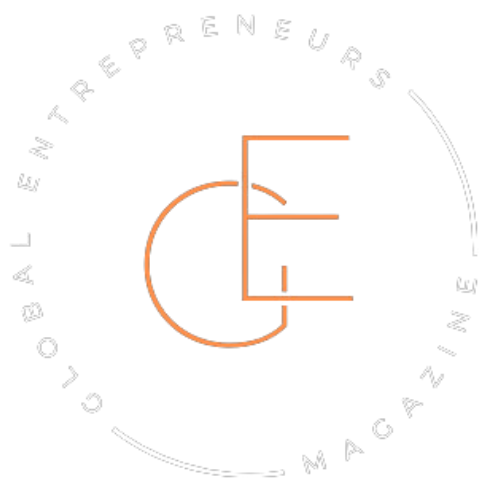James thought he had made it.
After years of grinding, sleepless nights, and pouring everything into his company, the business was finally turning a solid profit. He had a growing team, loyal customers, and a brand that people recognized. By all traditional measures, he was a success.
But there was a problem.
If James took a weekend off, things started slipping. If he was sick for a few days, problems piled up. Vacations? Forget it. Even when he tried to unplug, his phone never stopped buzzing. There was always a fire to put out, a deal to close, or a decision that “only he could make.”
That’s when it hit him: he hadn’t built a business—he had built a job.
And worse? It was the kind of job where he couldn’t clock out.
Most entrepreneurs don’t start businesses to trap themselves in endless work. They start them for freedom—financial freedom, time freedom, creative freedom. But somewhere along the way, many end up like James, stuck in a cycle where the business needs them to function.
That’s not real freedom.
A real business can run without you. It has structure, systems, and people who can operate without your constant input. And once you build a business like that? You actually get to enjoy the life you worked so hard for.
So how do you get there? That’s exactly what we’re diving into.
From Operator to Owner: The Mindset Shift You Need
Most entrepreneurs don’t struggle with building a business—they struggle with letting go of it.
Sarah was one of them. She started her marketing agency from scratch, wearing every hat in the business. Sales, client calls, invoices, even fixing the website when it broke—she did it all. And for a while, it worked. The business grew, and so did her team.
But every decision still went through her. Every problem still landed on her desk. And deep down, she liked it that way. After all, who knew the business better than she did?
Then one day, she missed a client deadline because she was too busy handling something someone else could have done. That’s when she realized she wasn’t running a company—she was bottlenecking it.
The difference between an operator and an owner
An operator is the business. If they step away, things fall apart.
An owner builds the business. They create systems, hire the right people, and trust them to get the job done.
The shift happens when you stop asking, “How can I do this?” and start asking, “Who can do this for me?”
It’s not about giving up control—it’s about focusing on what actually moves the business forward. The more you let go of the day-to-day grind, the more space you create for growth, strategy, and actual freedom.
Sarah started small. She handed off scheduling. Then client communications. Then project execution. And soon, her company wasn’t just surviving without her—it was thriving.
Most founders think no one can do things as well as they can. Maybe that’s true. But if you refuse to step back, your company will always be limited by what you can handle.
Real businesses aren’t built on control. They’re built on trust.
Design Your Company to Run Without You
Ben didn’t plan on working 80-hour weeks forever. When he started his logistics company, he told himself he’d set things up the right way—structured, efficient, and built for growth.
But reality had other plans.
Instead of running the business, he found himself buried in day-to-day chaos. Drivers calling in sick, clients demanding last-minute changes, and payroll issues stacking up. He was always the one solving problems. He figured that’s just what being a business owner meant.
Then one day, his daughter asked him why he was always too busy for dinner. He didn’t have a good answer.
That’s when he decided something had to change.
The “Franchise Mindset” (Even if You’re Not Franchising)
Big companies don’t depend on the founder showing up every day. McDonald’s doesn’t need Ray Kroc. Apple didn’t collapse when Steve Jobs was gone. That’s because these companies aren’t just businesses—they’re systems.
Ben started thinking the same way. If someone new joined his company today, could they step in and get things done without asking him a hundred questions? The answer was no.
So he built a system that didn’t require him.
Create Processes So Anyone Can Step In
Ben wrote down every major process in his company:
- How orders were received and processed
- How drivers were scheduled
- How customer complaints were handled
- How invoices were sent and payments collected
At first, it felt like a waste of time. But then something happened. His employees stopped asking him for answers because they had a playbook to follow.
Documenting processes doesn’t mean adding red tape. It means creating a business playbook so that your company runs smoothly—even when you’re not there.
Measure Success Without Being in the Weeds
Once the systems were in place, Ben didn’t need to micromanage. He set up key performance indicators (KPIs) to measure success without being involved in every detail:
- Customer satisfaction ratings told him if clients were happy.
- On-time delivery percentages showed how efficient his logistics team was.
- Cash flow reports made sure the business stayed financially healthy.
Instead of running around putting out fires, he spent his time looking at numbers that actually mattered.
The best part? He finally made it home for dinner.
Hire (and Empower) the Right People
Rachel built her business from the ground up. She prided herself on her work ethic, her attention to detail, and the fact that clients always wanted to work directly with her.
That was the problem.
She had a team, but they weren’t making decisions—they were waiting on her to make them. If a client had a special request, they asked Rachel. If there was an issue with a project, they asked Rachel. And when she finally tried to take a vacation, guess what happened?
Her phone rang. Over. And over. And over.
At first, she blamed her team. Why can’t they just take initiative? But then it hit her—she was the reason they weren’t stepping up.
She hadn’t hired leaders—she had hired helpers.
The biggest hiring mistake most founders make
Most entrepreneurs start by hiring people to “help” them. They look for employees who can follow instructions and take things off their plate. That sounds great—until you realize you’ve surrounded yourself with people who can’t operate without your constant input.
The real shift happens when you hire for ownership, not just execution.
Rachel restructured her hiring approach:
- Instead of hiring assistants, she hired managers.
- Instead of just delegating tasks, she transferred responsibility.
- Instead of being the go-to person for everything, she built a leadership team that could handle decisions on their own.
And here’s the kicker—her business actually ran better without her micromanaging everything.
How to build a leadership team that doesn’t rely on you
Rachel started by giving her managers clear authority over their areas:
- Operations: Who is responsible for ensuring everything runs smoothly?
- Sales & Clients: Who can make decisions about pricing, deals, and client issues?
- Finances: Who tracks cash flow, payments, and expenses?
At first, it was hard to step back. But when she stopped being the middleman for every decision, something amazing happened—her team rose to the challenge.
Delegation isn’t about handing off tasks—it’s about handing over trust
Most founders delegate work. But true delegation means delegating decisions.
Rachel gave her team the authority to solve problems without running everything past her. Instead of employees waiting for permission, they started taking action.
And when she finally went on vacation again?
No missed calls. No urgent emails. Just a business that ran on its own.
Automate and Systematize Everything You Can

Mike used to laugh at the idea of automation.
“Automation is for big corporations,” he’d say. “My business is built on personal service.”
That mindset worked—until it didn’t.
As his company grew, so did the small, repetitive tasks that ate up his time. Booking appointments, responding to emails, tracking invoices—it never ended. The more successful he became, the more buried he felt in work that had nothing to do with growth.
One night, while manually sending out follow-up emails at midnight, he realized something: his business wasn’t running him into the ground—he was.
The myth of “doing it all yourself”
Some entrepreneurs wear busyness like a badge of honor. They believe working harder means they care more. But here’s the truth—real success comes from working smarter, not longer.
Mike finally embraced automation. And no, it didn’t kill the personal touch in his business—it actually made it stronger.
Where automation makes the biggest impact
Once Mike identified the tasks that drained his time, he set up simple systems to handle them:
- Customer interactions → Automated email sequences handled follow-ups and FAQs, so clients got responses immediately—without him typing a single word.
- Scheduling → A booking system eliminated the endless back-and-forth of finding a time that worked.
- Billing & payments → Invoicing software ensured he got paid on time without chasing clients.
- Task management → A project management tool kept his team aligned without him micromanaging.
The power of standard operating procedures (SOPs)
Automation doesn’t just mean using software. It also means creating systems people can follow.
Mike documented every key process in his company—so that if someone new joined, they wouldn’t have to ask him a hundred questions. His employees had clear workflows, checklists, and guidelines.
The result?
- Fewer mistakes.
- Faster execution.
- More time for actual business growth instead of busywork.
The best part? His customers didn’t even notice. What they did notice was better service, faster responses, and a business that felt even more professional.
Mike still believes in personal service. He just doesn’t believe in wasting time on things that can run themselves.
Test Your Exit (Before You Take One)
When Lisa finally booked a two-week vacation to Italy, she told herself she wouldn’t check her phone.
She lasted two days.
By the third morning, she was answering emails from a café in Rome. By the fifth, she was on a client call outside the Colosseum. The entire trip, she wasn’t really on vacation—she was just working from a different country.
She had built a business that looked independent, but the moment she stepped away, cracks started to show.
That’s when she realized: if your business can’t survive without you for two weeks, it’s not a business—it’s a trap.
The “Vacation Test” (And Why It Exposes Weak Spots)
A business that truly runs without you should be able to operate seamlessly when you’re gone. The easiest way to test this? Step away.
Lisa started by taking small breaks:
- A full weekend with no emails or calls.
- A three-day trip without checking Slack.
- Then, a full two-week absence.
Each time, she looked for weak spots. Where did things break down? What questions kept coming her way? Which decisions still depended on her?
Every issue was a sign of something that needed fixing.
Building a Business That Passes the Test
To make sure her company could function without her, Lisa put these three things in place:
- Clear decision-makers → Instead of her team asking, “What would Lisa do?” they had authority to act based on pre-set guidelines.
- Fail-safes for emergencies → If something truly needed her input, there was a structured way to escalate it—but 90% of issues never made it to her.
- Regular check-ins, not constant oversight → She set up weekly reports with KPIs and status updates so she could see how things were running without being involved in the daily grind.
When Things Go Wrong (Because They Will)
The first time Lisa stepped away, things did go wrong. A miscommunication led to a client issue. A billing mistake delayed payments. But instead of swooping in to fix it all, she had her team handle it.
They learned. They adapted. And by the time she took her next vacation, the business ran better than before.
When Lisa finally returned from Italy—this time, fully unplugged—her business wasn’t just fine.
It was stronger than ever.
What Life Looks Like When You’re No Longer Tied to the Business
Alex spent years believing that once his company hit a certain revenue, he’d finally relax.
That day never came.
Even after scaling past seven figures, he was still stuck in the grind. The business demanded him daily, and stepping away felt impossible. His team relied on him, clients expected him, and truth be told—he wasn’t even sure what he’d do with free time if he had it.
Then, after a health scare, everything changed.
Sitting in a doctor’s office, hearing stress-related burnout as the diagnosis, he realized something: what’s the point of building wealth if you never get to enjoy it?
The Freedom That Comes With Letting Go
Once Alex fully removed himself from daily operations, life didn’t just get easier—it got better.
- He finally traveled without guilt—weeks in Europe, a summer by the beach.
- He rediscovered hobbies he hadn’t touched in years.
- He spent real time with family, no longer distracted by notifications and “urgent” emails.
- And his business? It kept growing—without him being in the weeds.
The New Role of a Business Owner
Stepping back doesn’t mean disappearing. Alex still checked in, made strategic decisions, and guided the vision of his company. But instead of working inside the business, he worked on it.
- Instead of managing employees, he mentored leaders.
- Instead of answering every email, he focused on long-term growth.
- Instead of putting out fires, he looked at the big picture.
The stress was gone. The constant urgency was gone. And for the first time in years, he actually felt like an entrepreneur again.
What Comes Next? Whatever You Want.
For some, stepping back means scaling even bigger. For others, it means investing in passion projects, philanthropy, or simply enjoying life.
The key is choice.
Alex built his company so that it could run without him. Now, his time was truly his own. And that, more than any revenue milestone, was real success.
Your Business Should Work for You—Not the Other Way Around
Most entrepreneurs don’t start businesses just to work harder. Yet, somewhere along the way, the dream of freedom turns into endless work, constant stress, and a business that can’t function without you.
It doesn’t have to be that way.
James, Sarah, Ben, Rachel, Mike, Lisa, and Alex all faced the same struggle—being trapped in a company that relied too much on them. But each of them found a way out. They stopped operating and started owning. They built teams, put systems in place, and tested their businesses to make sure they could run smoothly without their constant involvement.
The result?
- More freedom.
- Less stress.
- A company that grows on its own.
If you’re constantly buried in work, ask yourself: Are you building a business—or just a job with a fancy title?
The moment you decide to step back, put the right people in place, and trust the systems you build, you’ll realize something powerful:
Your business was never supposed to own you. It was supposed to set you free.




